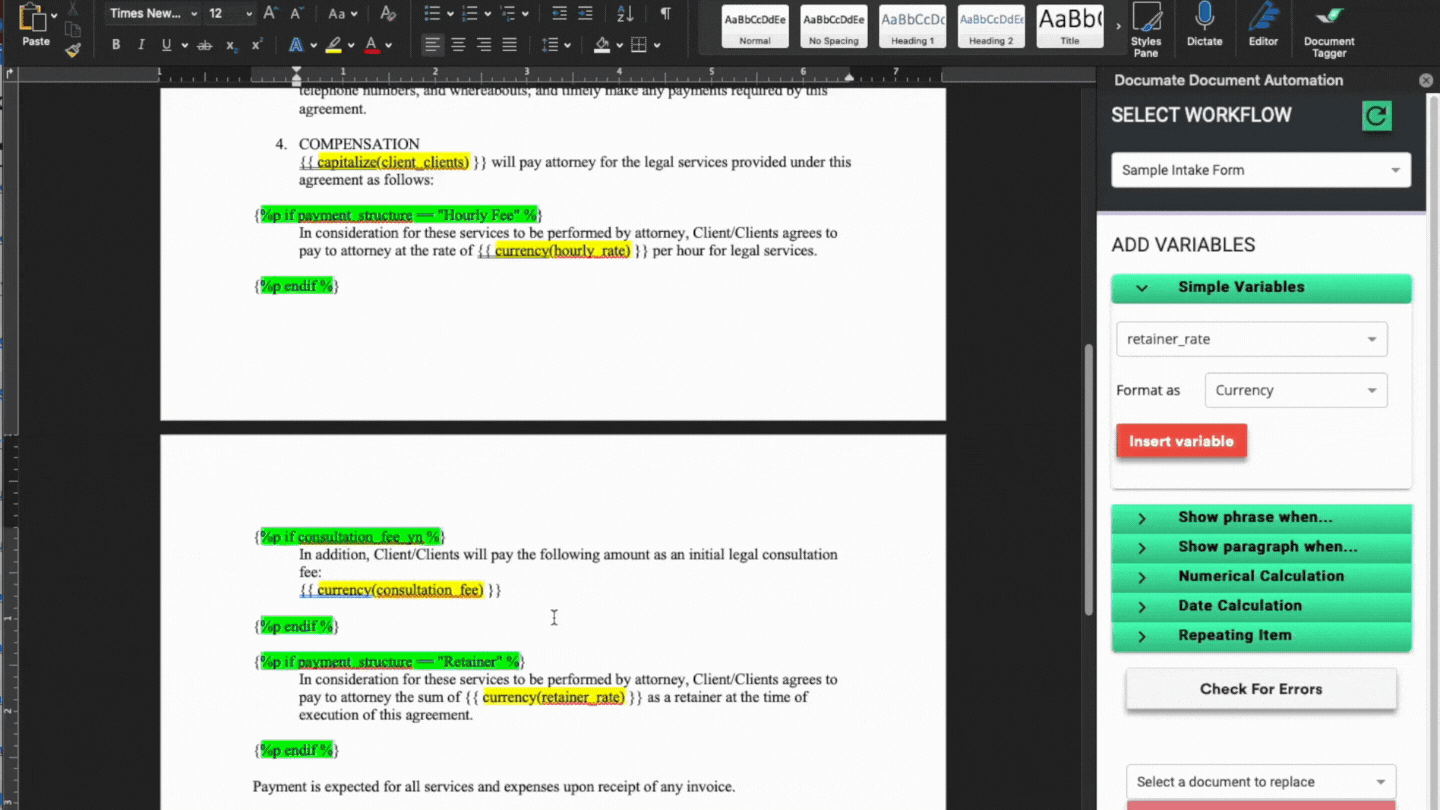No-Code Word Add-In
Our no-code Word add-in makes it easy to set up documents without any syntax or code.
How can you load the Microsoft Word add-in in Microsoft Word?
Watch this video here (or above) on how to load it or click here for the MS Word store. Once you load it, click Document Tagger in the Word Ribbon.
Find Your API Key
Your Client Name will be your subdomain.
On your account, click Settings > API Keys. You will type in a title for your API Key and click on Create a Key.

Copy the API Key. Once the key is generated, click on Copy API Key and use this to log into your account.
Please Note: For your privacy, we do not allow you to access the same API key twice on the system. The Word add-in does remember your login, however it is good to keep this key somewhere else to find the key again if needed.

Using the Gavel Add-In
Once you have logged into your Document Tagger using the API key, you will want to Select the Workflow that you are using to update/create the template.
TIP: You can upload the output document to your workflow before utilizing the Word add-in. This can help you see if you have all the questions in your workflow that you may need in your output document. If you do go back to your workflow and add questions and variables you will want to click on the green refresh arrow to update the add-in with your changes.
Simple Variables:
You can insert simple variables and change their formatting. You can change text to Uppercase or First Letter Capital. Dates (including the function {{today()}}) can be formatted in various date style formats. If you do not see the date format you would like you can find more date options in Code Curious - Formatting Dates.
TIP: You can bold, italicize, underline any variable by highlighting the variable and using the Word text formatting.
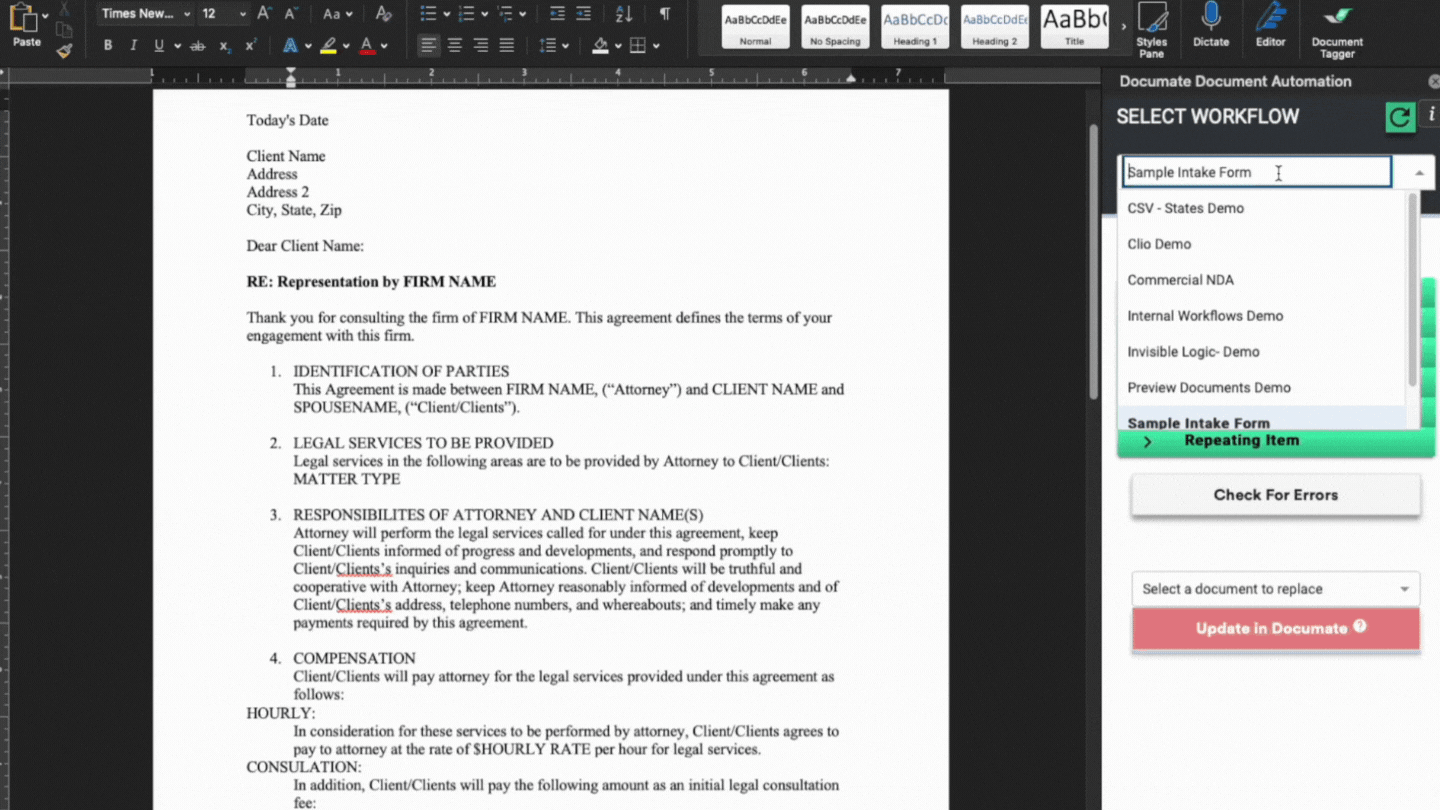
Currency Formatting:
You can set various formatting for numbers. If you do not see the format you'd like to utilize you can find out more in Code Curious - Formatting Numbers and Code Curious - Formatting Special Numbers
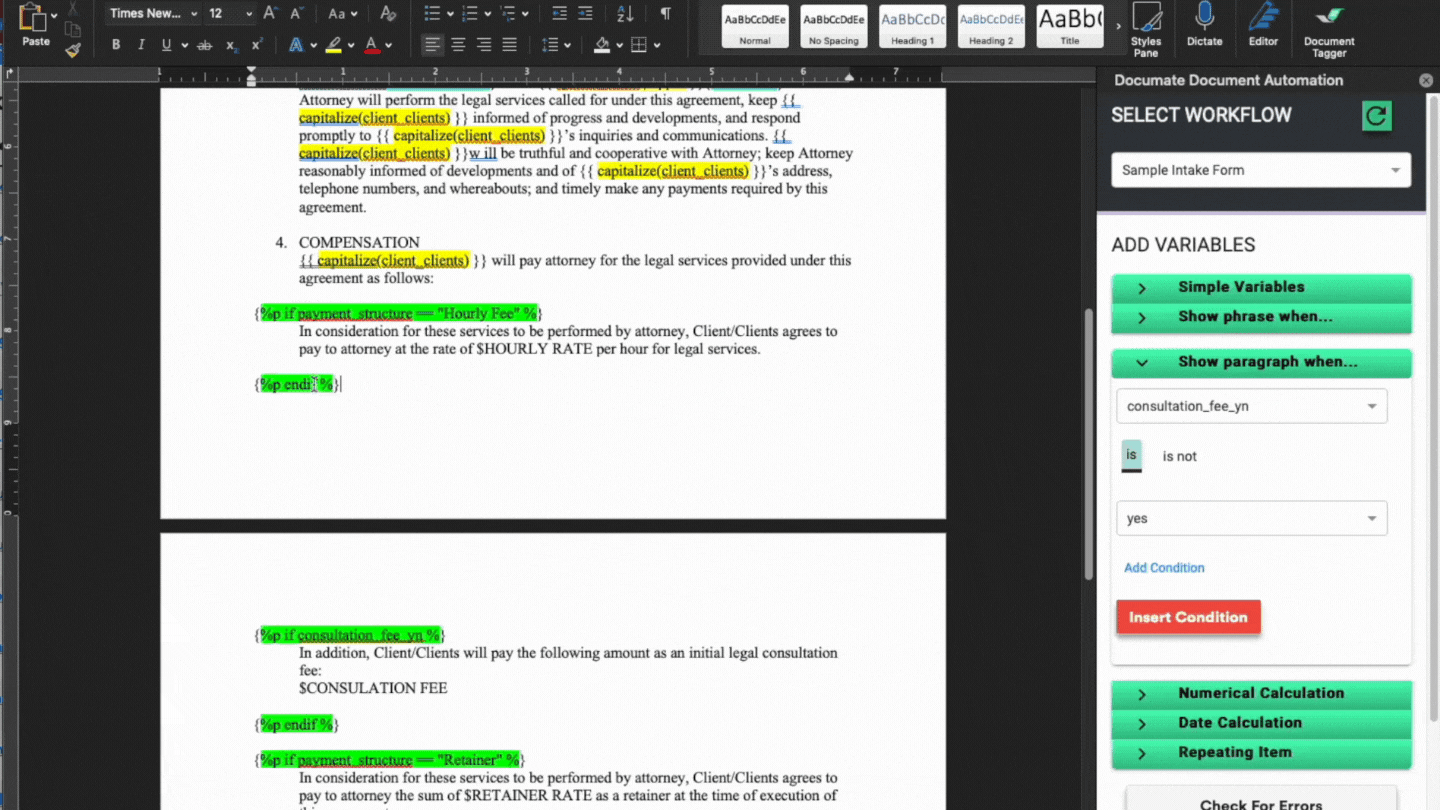
Multi-Select Checked Values:
You can input only the selected Checked Values to be listed with the Word add-in, however there are many ways you can set up your Multi-Select values. You can learn about bulleted lists, tables, non-alphabetical order, and other options in Code Curious - Multi Select Responses.
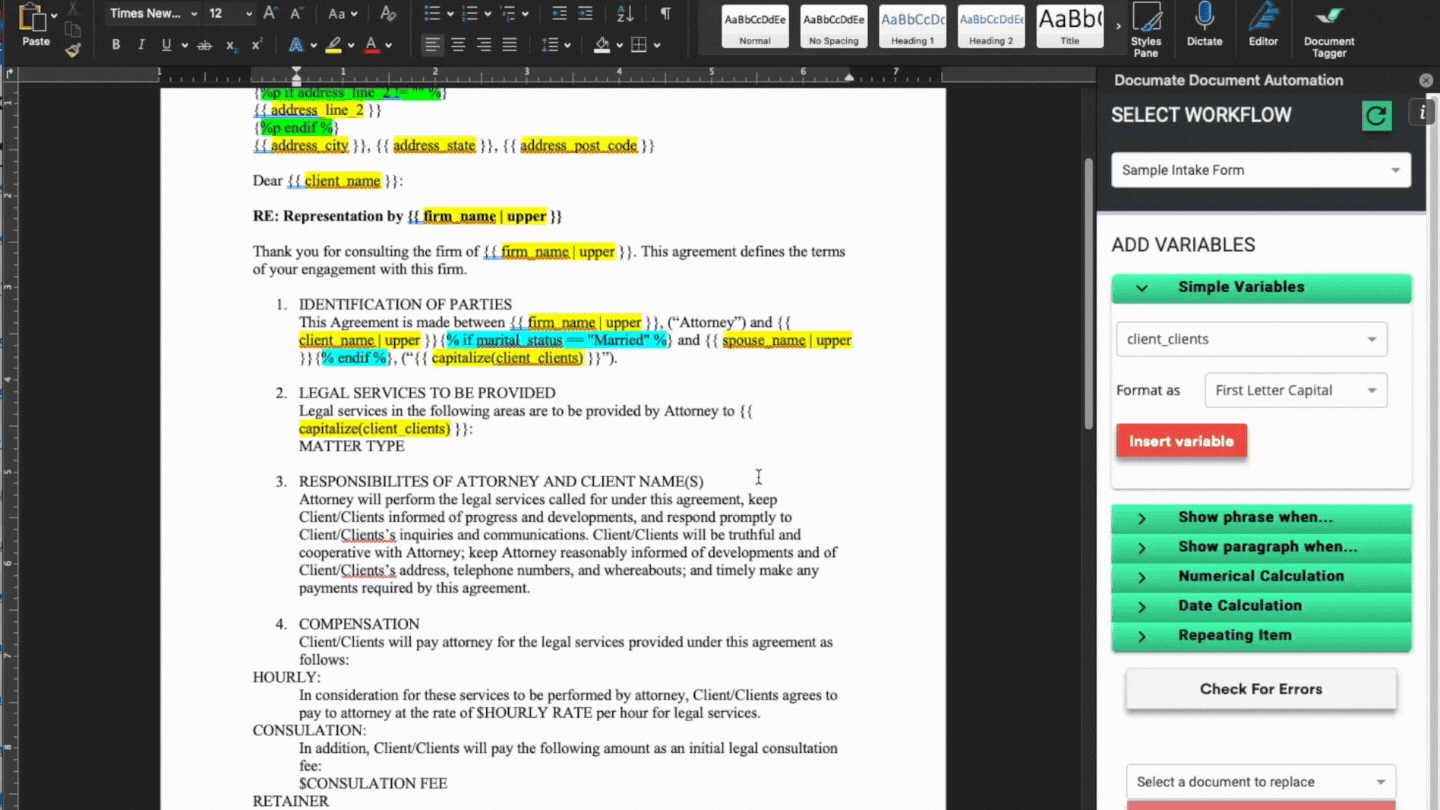
Conditional Phrases:
By highlighting the phrase and then selecting the conditions you can conditionalize when the output document will show or not show any given phrase. You can even set multiple conditions by adding conditions.
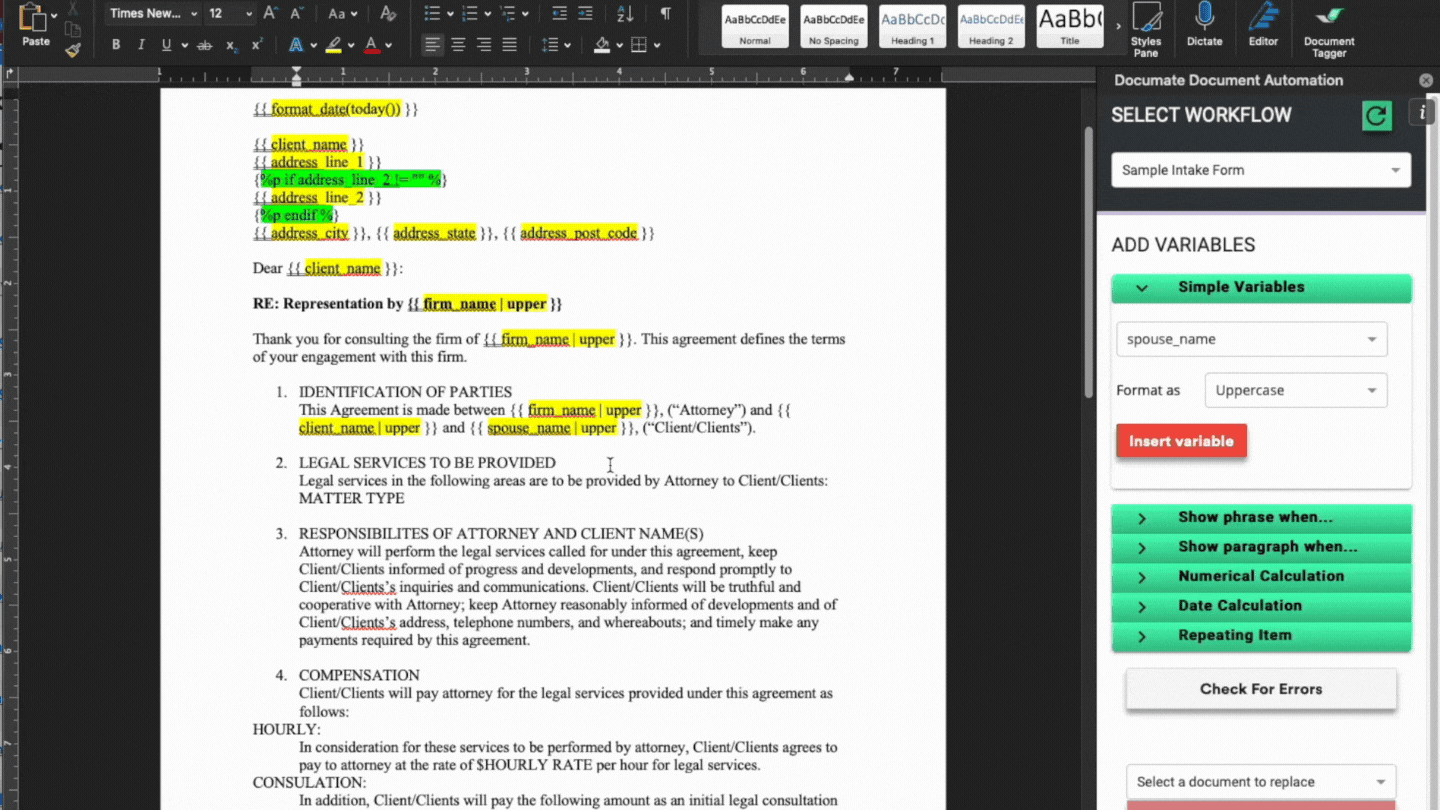
Conditional Paragraphs:
Much the same as the Conditional Phrases you can highlight and add conditions to entire paragraphs or pages.
TIP: Be sure your Word document is formatted with List Styles for any outlines or articles that you are looking to make conditional. This will allow the output document to auto-update the numbering formats when the conditions are or are not met.

Numerical and Date Calculations:
With Numerical Calculations, you can do strings of addition, subtraction, multiplication, and division for any of your number or numbers with decimal question types. You can also utilize Invisible Logic within your workflow to accomplish more complex calculations as well. You can find more information about other Numerical Calculations and Settings in Code Curious - Numerical Calculations.
Date Calculation provides two options on calculating time from dates. You can calculate the time between two date sets or you can add or subtract a length of time from a date. These range from days, weeks, or years and can be calculated from date variables in your workflow or from the standard "Today" variable. More information on formatting dates and other date calculations not included in the word add-in can be found in Code Curious - Formatting Dates.
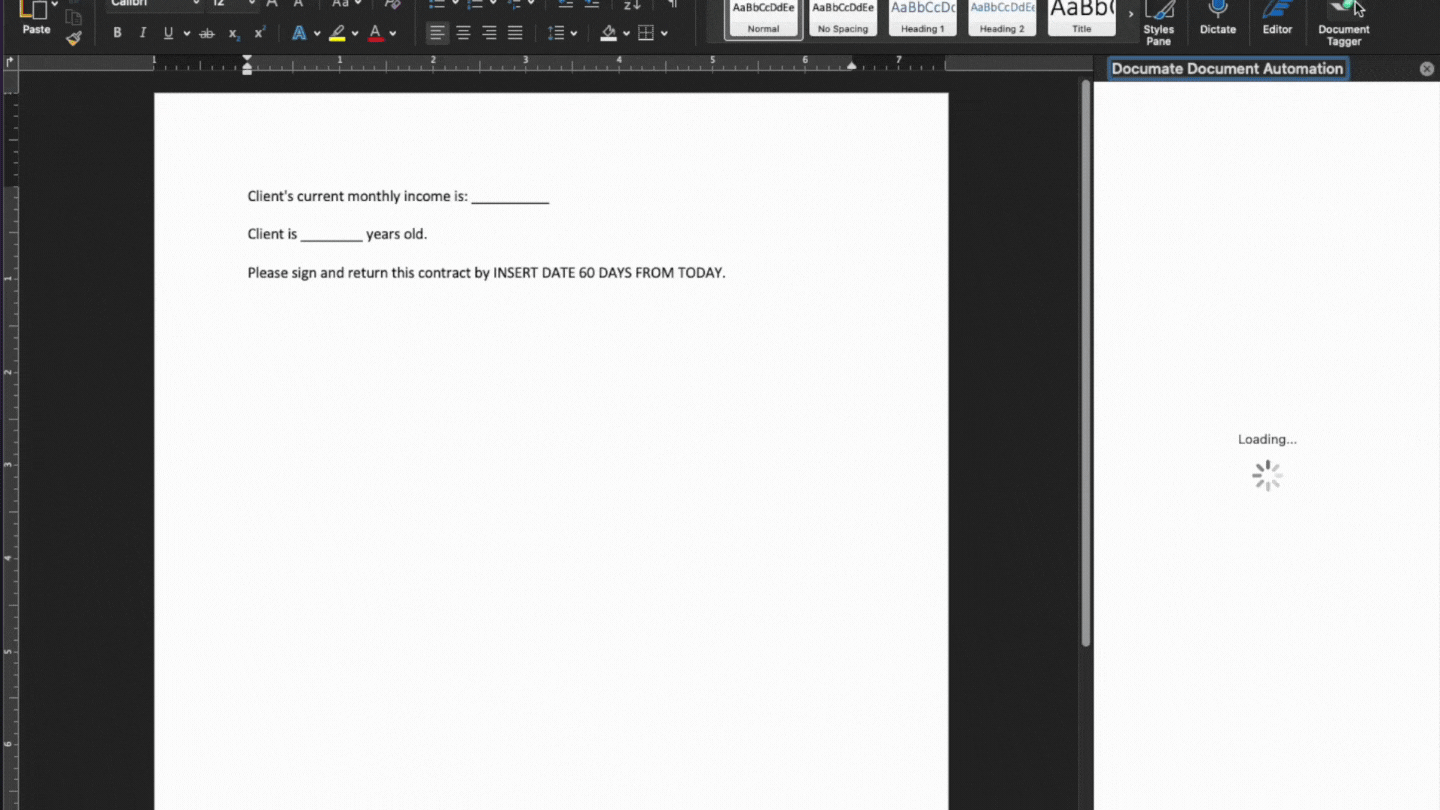
Repeating Items:
There are various ways to tag your repeating items into the output document. To learn more about all the ways, go to Code Curious and visit all Repeating Item sections starting with the Basics. For the Word add-in we will cover four main ways to tag a repeating item in your output document.
Lists (such as Commas, Oxford Comma, Semicolon, and Custom Separator):
When you would like to list out a set of attributes or answers for all iterations of the repeating item in one line, the Word add-in provides different separator types. This will create a one-line list of the answers.
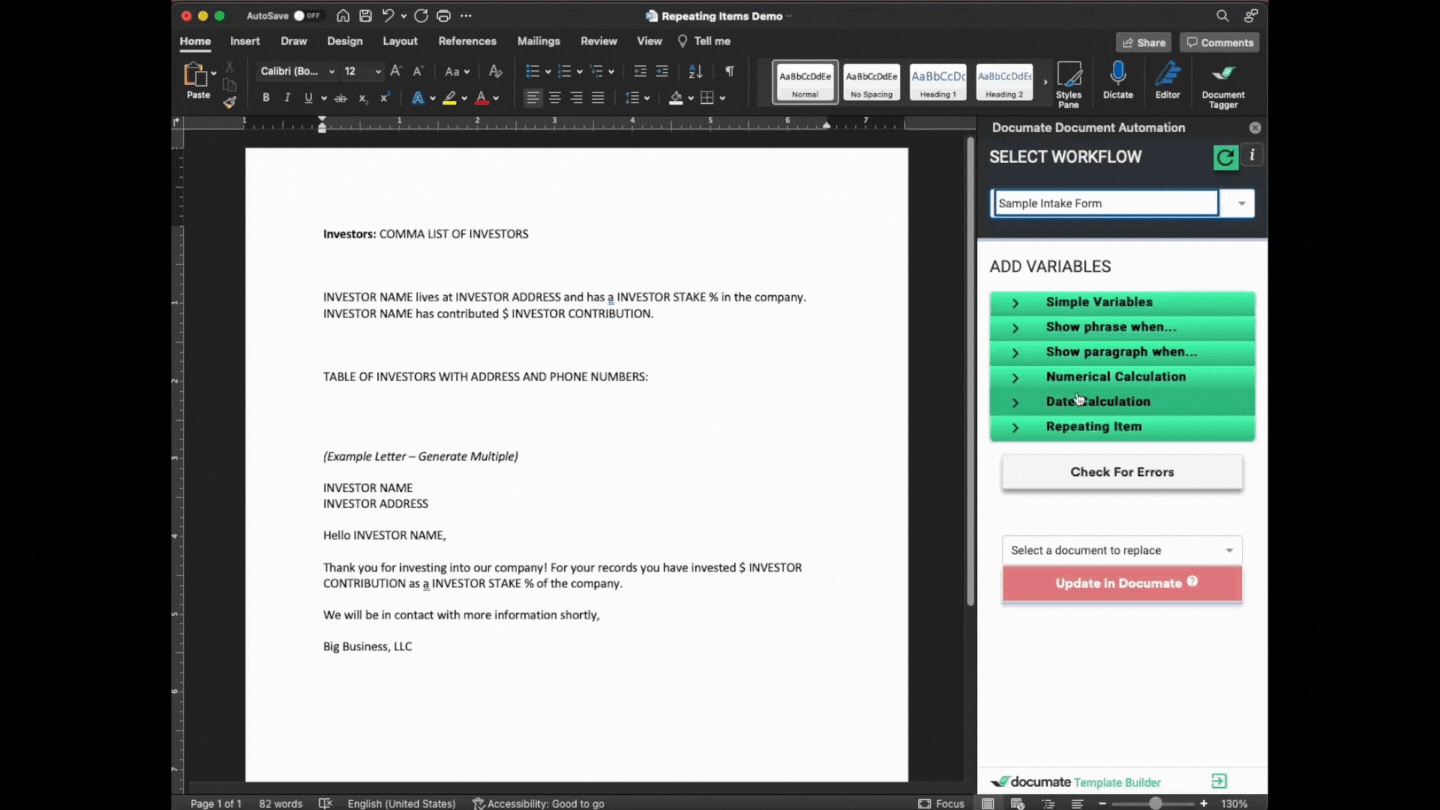
Multi-line Lists:
When you have a set of information or paragraph you would like to be repeated for each iteration, multi-line lists will provide the inputs to place in the paragraph or data set. This will begin with a paragraph code and you will cut and paste the data into the paragraph to create multiple paragraphs for each iteration of the repeating item.
TIP: Utilizing the CTL+C for copy and the CTL+V for paste is very handy to copy and paste these variables!
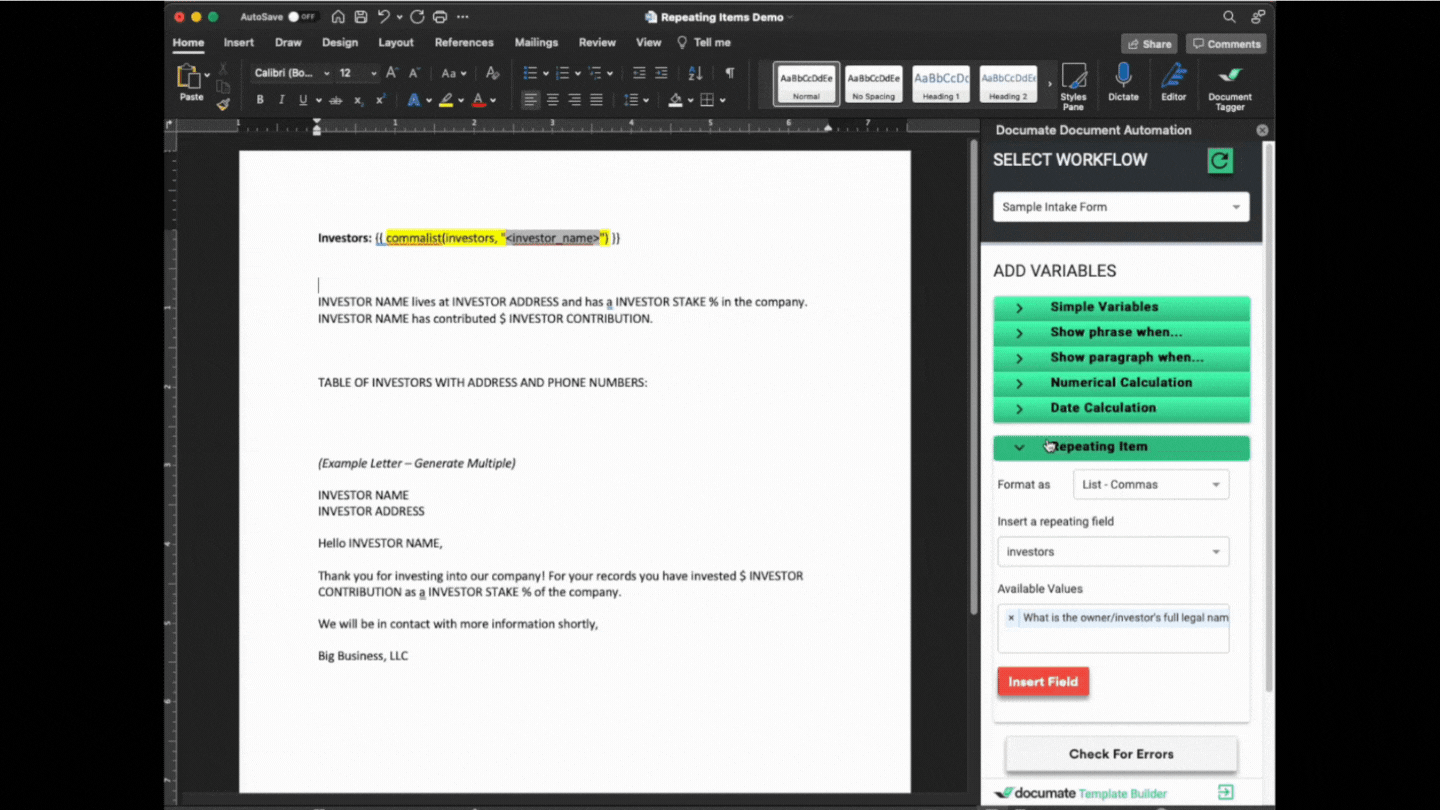
Tables:
You can insert tables directly from the Word add-in by selecting the Table Format under Repeating Item. Select the Values you'd like to include and it will auto create a Word table that you can modify and edit to match the look you prefer.
The bestTip: If you have a special format of a table you'd like to use, you can utilize the multi-line option and input the the data into a table as well.

Generate Multiple:
Under the Repeating Item, you can also find Generate Multiple Documents as a Format option. This is the format used to input data from a repeating item into an output document that you would like to create for each iteration of the repeating item. The best practice here is to have all the values output and then cut/copy them into the output document.
Tip: Be sure you mark the output document as Generate Multiple in the Output Documents Tab of your Workflow. Failure to do so will result in an error in the workflow.

Conditionals Based on Repeating Items:
You can use the Word add in to create conditions with your repeat item variables. You can set conditions based on the number of instances of a repeat item.

You can also create conditions based on the value of one of your repeat item attributes.
.gif)
Checking for Errors and Updating Documents:
By clicking the "Check For Errors" you can check for any potential errors. (Please note that while the Word add-in can check for the formatting and variables it provides, if you utilize other coding, this may trigger a warning even if there is no error. If you are able to run the workflow and output the documents correctly and you are receiving errors on the Check for Errors, please contact help@gavel.io so we can update the Word add-in.)
If you have already uploaded the output document to your Output Documents tab in your workflow you will be able to update the output document directly from the Word add-in by selecting the document in the dropdown and clicking on Update Document.
